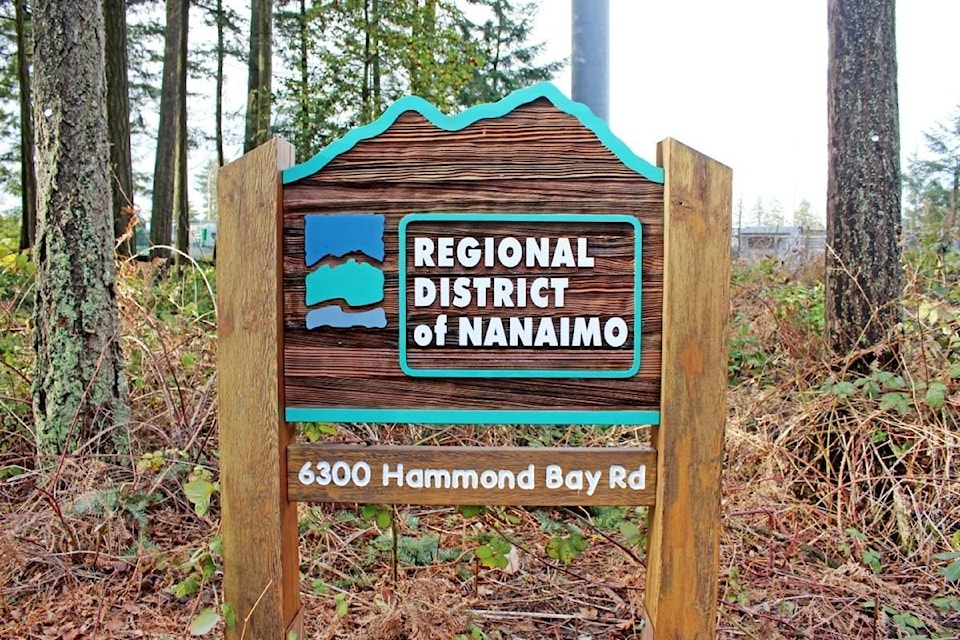The Regional District of Nanaimo board of directors declined to make a motion to give third reading to a staff recommendation to amend an Electoral Area F bylaw concerning the production of cannabis in the region.
At its regular board meeting on Feb. 27, no director made the motion to the proposed changes to zoning and subdivision Bylaw 1285.31, which applies only to the Coombs and Errington areas. But amendment to Bylaw 500.415, which covers Electoral Areas A, C, G and H, was given third reading by the board.
The bylaw amendments involve a change in terminology from marijuana production to cannabis production. As well, production of cannabis will no longer be restricted to medical purposes only. The amended bylaw will include non-medical cannabis production to reflect the federal government’s anticipated legalization of recreational cannabis on July 1.
At present in Electoral Area F, zoning bylaws permit medical cannabis production facilities on land in the Agricultural Land Reserve and within the Industrial 2 Zone.
Electoral Area F representative, Jack McLean, who attended the meeting for Director Julian Fell, voted against receiving the report of the public hearing on Feb. 6 for the proposed bylaw amendment as well as the third reading.
“I take objection to this result of the public hearing,” said McLean. “The public hearing no way reflects approval of this recommendation by staff. All observations at the public hearing were against what staff had recommended. If we are going to have a public hearing, I think we should deal honestly with what the recommendations of the public hearing was.”
Board vice-chair Ian Thorpe, who presided over the meeting in the absence of chair Bill Veenhof, advised McLean that he can disagree with the report but not to direct comments against staff.
McLean said the report does not reflect the true sentiments of the people who expressed their views at the public hearing.
“Everybody that spoke about this bylaw is against it,” said McLean. “They all recommended that (cannabis production) be in the industrial zone, not in the agricultural zone.”
Paul Thompson, manager of long-range planning, told The News that residents have no other recourse as the province has already made it legal for medical cannabis production facilities to be in agricultural land reserve.
“The regional district has no option… it can be grown there (ALR),” said Thompson. “All the regional district can do is put in some regulations pertaining to that use but we can’t prohibit it. People were upset and didn’t like it. We heard that. But the RDN does not have an option there in terms of not allowing it.”
However, Thompson pointed out that it is not going to be a free-for-all once the federal government makes recreational cannabis legal later this year.
“Anyone wishing to start cannabis production will have to go through federal process to get approved,” said Thompson. “It’s just not anybody that can start growing it. Those facilities that have been approved through that federal process can do it.”
Geoff Garbutt, general manager of strategic and community development, explained that the first motion was just to receive the report of the public hearing in February and the second was to update the bylaw to include recreational cannabis production, as the provincial government already allows medical cannabis facilities in agricultural land and industrial zones.
McLean said that by allowing cannabis production in agricultural land, it is going to bring “many more problems in my area.
“Area F consists of many small acreages that are locked in the agricultural land reserve,” said McLean. “If you give approval to this operation in the agricultural land reserve, a five-acre piece of ALR land that is mainly in the residential area, could become a commercial operations with 75 per cent of the area covered with buildings or greenhouses. That is not preserving agricultural lands.”
McLean added that a cannabis growing operation in a rural area such as Area F may draw bad elements to the community.
“We do not have the policing in Area F that you have in the municipalities,” said McLean. “We would see the RCMP on the rural roads once a year. You put a marijuana grow-op in our region in that situation you are inviting trouble. And you are inviting in semi-residential areas. A lot of the area designated in the ALR is not being farmed. It is rural residential areas.”
Area F, McLean pointed out, has a major industrial area, and the commuity would have no objections to cannabis production facilities there.
As for the recommendation not being moved at the board, Thompson said, it’s still being processed and that staff would wait for Area F Director Fell to indicate what action he wants to take.
Send story tips to: michael.briones@pqbnews.com
